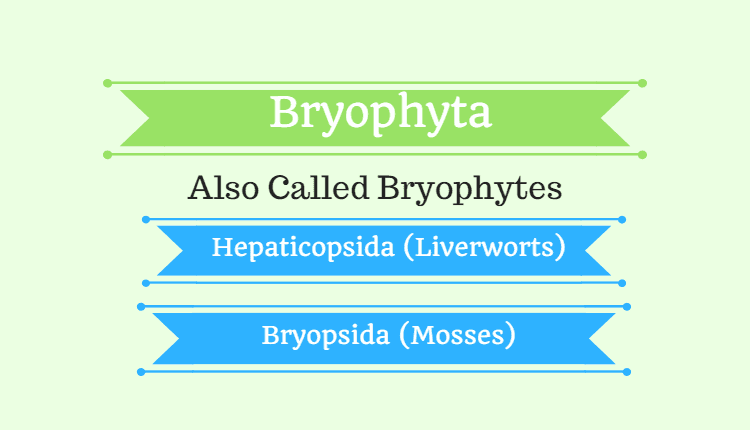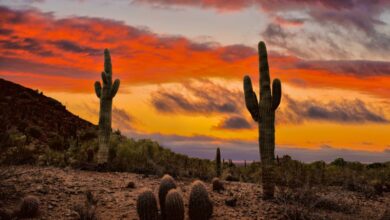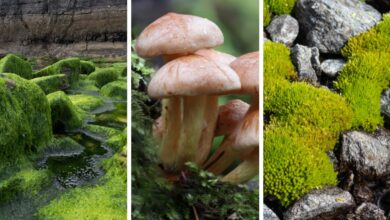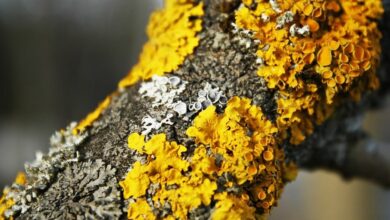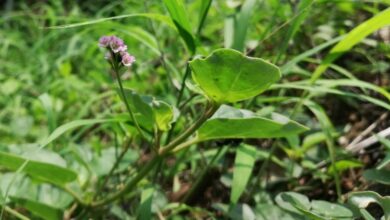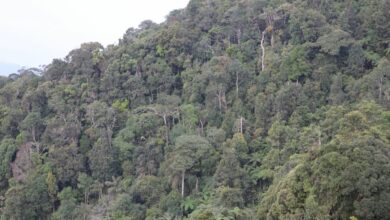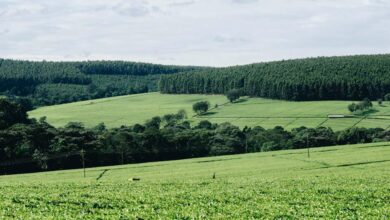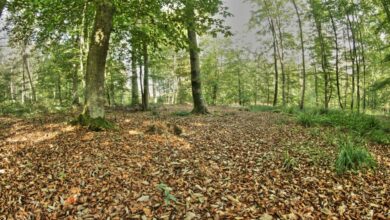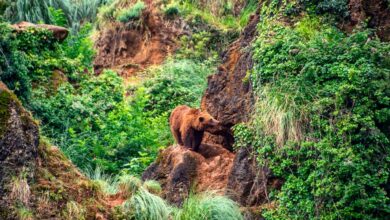Boreal Forests
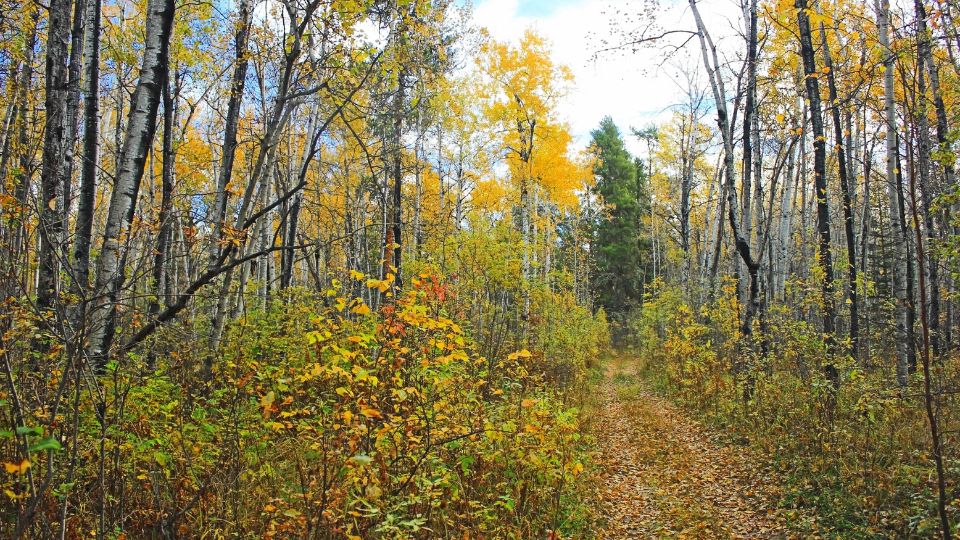
Boreal forests, also known as taiga or coniferous forests, are a type of forest ecosystem found in the cold, northern regions of the world. They are characterized by coniferous trees such as spruce, pine, and fir, as well as a distinct seasonal cycle of long, cold winters and short, mild summers. Boreal forests are among the largest terrestrial ecosystems on earth and are known for their high biodiversity and ecological importance.
Boreal Forest Location
Boreal forests are found in the northern hemisphere, primarily in Canada, Alaska, Russia, and Scandinavia. They also extend into northern Asia and Europe. Boreal forests cover approximately 17 million square kilometers, which is about 29% of the Earth’s total forest area.
Boreal Forest Canada
Boreal forests in Canada are found primarily in the country’s northern regions, including the provinces of British Columbia, Alberta, Saskatchewan, Manitoba, Ontario, and Quebec, as well as the territories of Yukon, Northwest Territories, and Nunavut. These forests cover approximately 1.3 billion hectares, or about 60% of Canada’s land area. The boreal forest in Canada is home to a diverse array of plant and animal species, including iconic species such as the Canadian Lynx, Moose, Woodland Caribou, and the Spruce Grouse.
In Canada, the boreal forest is also known for its rich natural resources including timber, oil, gas, and minerals, and is an important source of income for many communities. However, human activities such as logging, mining, and oil and gas development have led to deforestation and habitat loss, and conservation efforts are needed to protect and preserve these vital ecosystems for the future. Indigenous peoples have lived in the boreal forest for thousands of years and have a deep connection to the land and rely on it for their livelihoods.
Many conservation initiatives such as protected areas and sustainable forestry practices are been implemented in Canada to preserve the Boreal Forest and its biodiversity. The Canadian Boreal Forest Agreement (CBFA) also encourages conservation and sustainable use of Canada’s Boreal Forest.
Importance of boreal forests for the environment
Boreal forests are critical for the global climate, as they store large amounts of carbon and play a key role in the global carbon cycle. They also provide habitat for a wide variety of plant and animal species, many of which are found nowhere else on Earth. Boreal forests are also an important source of resources for human societies, including timber, pulp, and oil and gas. Additionally, traditional indigenous cultures depend on these forests for their livelihoods.
Characteristics of Boreal Forests Habitats
The following are the key characteristics of Boreal forests habitats:
Tree species
Boreal forests are characterized by their coniferous trees, such as spruce, pine, and fir. These trees are adapted to the harsh conditions of the boreal region, including cold temperatures, short growing seasons, and nutrient-poor soils. They often have shallow roots and are able to survive through the cold winter months by shutting down their metabolic processes. Some of the common tree species of Boreal Forest are Black spruce, Jack Pine, White Spruce, Balsam Fir, Larch and Eastern Hemlock.
Soil
The soils of boreal forests are typically nutrient-poor and acidic, with a high content of organic matter. They are generally shallow and well-drained, with a thick layer of leaf litter and mosses. Due to the low temperatures, the decomposition of organic matter is slow, resulting in a thick layer of peat that can be several meters deep in some areas.
Seasonality
Boreal forests have a distinct seasonal cycle, with long, cold winters and short, mild summers. The growing season is typically only a few months long, and during this time, there is a burst of activity as plants and animals take advantage of the warmer temperatures and increased sunlight. The short growing season can limit the diversity of plant life within the forest.
Wildlife
Boreal forests are home to a wide variety of wildlife, including mammals, birds, fish, and reptiles. Some common mammals include moose, black bear, gray wolf, and lynx, while birds like the Spruce Grouse, Wood Duck, and Ruffed Grouse are also found in these habitats. Boreal forests also host a wide variety of fish species in its rivers and streams, including brook trout, lake trout, and arctic grayling.
Conservation
Boreal forests are one of the most important ecosystems on Earth, providing critical habitat for a wide variety of plant and animal species, as well as regulating the global climate by storing large amounts of carbon. However, these forests are under threat from human activities such as logging, mining, and oil and gas development. Conservation efforts are needed to protect and preserve these vital ecosystems for the future, including protected areas and sustainable forestry practices.
| Characteristic | Description |
|---|---|
| Tree species | Coniferous trees such as spruce, pine, and fir, adapted to cold temperatures, short growing seasons, and nutrient-poor soils. |
| Soil | Nutrient-poor and acidic, with a high content of organic matter, shallow and well-drained, with a thick layer of leaf litter and mosses. |
| Seasonality | Long, cold winters and short, mild summers, with a short growing season of a few months. |
| Wildlife | A wide variety of wildlife, including mammals, birds, fish, and reptiles. Common species include moose, black bear, gray wolf, and lynx, Spruce Grouse, Wood Duck, and Ruffed Grouse. |
| Conservation | Critical for the global climate and biodiversity, threatened by human activities such as logging, mining, and oil and gas development. Conservation efforts are needed to protect and preserve these vital ecosystems for the future. |
Types of Boreal Forests
There are several types of boreal forest, each with its own unique characteristics. Some of the main types include:
Lowland boreal forest
This type of boreal forest is characterized by a relatively flat terrain, with a high-water table and poorly drained soils. The dominant tree species in lowland boreal forests are black spruce and tamarack.
Upland boreal forest
This type of boreal forest is characterized by hilly or mountainous terrain, with well-drained soils and a lower water table. The dominant tree species in upland boreal forests are white spruce, balsam fir, and paper birch.
Boreal Shield Forest
This type of boreal forest is found in the Canadian Shield, characterized by rocky terrain, thin soils, and a low diversity of tree species. The dominant tree species in Boreal Shield Forest are white spruce, balsam fir, and black spruce.
Boreal mixed wood forest
This type of boreal forest is characterized by a mixture of coniferous and deciduous tree species. The dominant tree species in Boreal mixed wood forest are aspen, balsam poplar, and white spruce.
Boreal peatland forest
This type of boreal forest is characterized by a thick layer of peat, which accumulates due to slow decomposition of organic matter in the cold and wet conditions. The dominant tree species in Boreal peatland forest are black spruce and tamarack.
Types of Boreal Forests
There are several types of boreal forest, each with its own unique characteristics. Some of the main types include:
Lowland boreal forest
This type of boreal forest is characterized by a relatively flat terrain, with a high-water table and poorly drained soils. The dominant tree species in lowland boreal forests are black spruce and tamarack.
Upland boreal forest
This type of boreal forest is characterized by hilly or mountainous terrain, with well-drained soils and a lower water table. The dominant tree species in upland boreal forests are white spruce, balsam fir, and paper birch.
Boreal Shield Forest
This type of boreal forest is found in the Canadian Shield, characterized by rocky terrain, thin soils, and a low diversity of tree species. The dominant tree species in Boreal Shield Forest are white spruce, balsam fir, and black spruce.
Boreal mixed wood forest
This type of boreal forest is characterized by a mixture of coniferous and deciduous tree species. The dominant tree species in Boreal mixed wood forest are aspen, balsam poplar, and white spruce.
Boreal peatland forest
This type of boreal forest is characterized by a thick layer of peat, which accumulates due to slow decomposition of organic matter in the cold and wet conditions. The dominant tree species in Boreal peatland forest are black spruce and tamarack.
| Type of Boreal Forest | Description | Common Plant species |
|---|---|---|
| Lowland Boreal Forest | Characterized by a relatively flat terrain, with a high water table and poorly drained soils. | Black spruce (Picea mariana), Tamarack (Larix laricina) |
| Upland Boreal Forest | Characterized by hilly or mountainous terrain, with well-drained soils and a lower water table. | White spruce (Picea glauca), Balsam fir (Abies balsamea), Paper birch (Betula papyrifera) |
| Boreal Shield Forest | Characterized by rocky terrain, thin soils, and a low diversity of tree species. | White spruce (Picea glauca), Balsam fir (Abies balsamea), Black spruce (Picea mariana) |
| Boreal Mixedwood Forest | Characterized by a mixture of coniferous and deciduous tree species. | Aspen (Populus tremuloides), Balsam poplar (Populus balsamifera), White spruce (Picea glauca) |
| Boreal Peatland Forest | Characterized by a thick layer of peat, which accumulates due to slow decomposition of organic matter in the cold and wet conditions. | Black spruce (Picea mariana), Tamarack (Larix laricina) |
Unique Characteristics of Boreal Forest Plants
The unique characteristics of boreal forest plants include:
| Characteristic | Description |
|---|---|
| Needle-like leaves | Boreal forest plants have needle-like leaves that are adapted to withstand the cold temperatures and conserve water. |
| Coniferous | Boreal forest plants are mostly conifers, which are trees that have needles instead of leaves and reproduce with cones instead of flowers. |
| Shallow roots | Boreal forest plants have shallow roots that are adapted to the nutrient-poor soils. |
| Slow growth rate | Boreal forest plants have a slow growth rate due to the short growing season and low temperatures. |
| Cold tolerance | Boreal forest plants are adapted to the cold temperatures of the boreal forest and can survive through the harsh winter months. |
| Adaptations to fire | Some boreal forest plants have adaptations that allow them to survive or even benefit from fire, such as regenerating from underground buds or cones that require heat to open. |
| High resin content | Some boreal forest plants have a high resin content which helps them to resist pests and diseases. |
Needle-like leaves
Boreal forest plants have needle-like leaves that are adapted to withstand the cold temperatures and conserve water. Needles are smaller in size than leaves and contain less water, making them less prone to freezing damage. Additionally, needles have a waxy coating that helps to reduce water loss.
Coniferous
Boreal forest plants are mostly conifers, which are trees that have needles instead of leaves and reproduce with cones instead of flowers. Conifers are well adapted to the cold temperatures and short growing season of the boreal forest and are able to survive through the harsh winter months. They have a high photosynthetic efficiency, which allows them to make the most of the limited sunlight available during the short growing season. Additionally, they produce cones that can protect the seeds from cold, frost and other harsh conditions.
Shallow roots
Boreal forest plants have shallow roots that are adapted to the nutrient-poor soils. The shallow root systems allow them to quickly absorb water and nutrients during the short growing season. Also, they are able to reach to the nutrient-rich upper soil layer, which is where most of the organic matter is found.
Slow growth rate
Boreal forest plants have a slow growth rate due to the short growing season and low temperatures. The slow growth rate allows them to conserve energy and survive through the long, cold winter months. They can also use this slow growth to their advantage by producing deep tap roots that can reach deep into the soil to reach the water table during dry periods.
Cold tolerance
Boreal forest plants are adapted to the cold temperatures of the boreal forest and can survive through the harsh winter months. They have mechanisms such as anti-freeze proteins that protect them from freezing damage and can survive in low temperatures by slowing down their metabolic processes.
Adaptations to fire
Some boreal forest plants have adaptations that allow them to survive or even benefit from fire. For example, many conifers have thick bark that can protect them from fire damage, and some species such as Jack Pine and Lodgepole Pine have cones that require heat to open and release their seeds, which can germinate in the nutrient-rich ash left behind after a fire. Additionally, some species such as aspen, balsam poplar, and white spruce have a regenerative ability to sprout new growth from underground buds after a fire. This ability allows them to quickly colonize areas that have been burned and provide food and habitat for wildlife.
Importance of Boreal Forests
| Importance | Description |
|---|---|
| Biodiversity | Boreal forests are home to a wide variety of plant and animal species, many of which are found nowhere else on Earth. They provide habitat for iconic species such as the Canadian Lynx, Moose, Woodland Caribou, and the Spruce Grouse, among many others. |
| Carbon sequestration | Boreal forests play an important role in the global carbon cycle, as they store large amounts of carbon in their trees and soils. By absorbing and storing carbon, boreal forests help to regulate the Earth’s climate and mitigate the effects of climate change. |
| Climate regulation | Boreal forests also help to regulate the Earth’s climate by releasing water vapor into the atmosphere, which cools the surrounding air and creates a more stable climate. They also act as a barrier against cold Arctic winds, making the local climate more moderate. |
| Water regulation | Boreal forests are also important for water regulation, as they help to maintain the water cycle by absorbing and releasing water into the atmosphere. They also protect water sources by preventing soil erosion and reducing the risk of flash floods. |
| Economic value | Boreal forests provide important economic benefits, including timber, paper, and other forest products. They also support a wide range of recreational activities such as hunting, fishing, and camping. Additionally, they are an important source of income for many rural communities. |
| Cultural significance | Boreal forests hold significant cultural and spiritual value for many indigenous communities. They rely on them for their livelihoods, food and medicine and also have deep connections to the land. |
| Ecological services | Boreal forests also provide a wide range of ecological services, including pollination, seed dispersal, nutrient cycling, and pest control. They also play an important role in maintaining the overall health and biodiversity of the planet. |
In conclusion, boreal forests are a vital and unique ecosystem found in the cold, northern regions of the world. They are characterized by their coniferous trees, such as spruce, pine, and fir, as well as a distinct seasonal cycle of long, cold winters and short, mild summers. Boreal forests are important for a variety of reasons, including biodiversity, carbon sequestration, climate regulation, water regulation, economic value, cultural significance, and ecological services.
They are critical for maintaining the overall health and biodiversity of the planet, and play a crucial role in regulating the global climate. However, boreal forests are under threat from human activities such as logging, mining, and oil and gas development, making conservation efforts crucial to preserve these vital ecosystems for the future. It is important to protect these unique and fragile ecosystems to maintain their ecological integrity and biodiversity for future generations.



